|
| Part 4 A La Carte |
|
| (1) Oyahiko-sama Genealogy
I was interested in the pamphlet received at Yahiko Shrine with a genealogy
and the explanation "The Ohkami of Yahiko Shrine is the great-grandson
of Amaterasu-sama."
A bit long, but excuse me to quote it.
|
|
 |
|
Before Oyahiko-sama was sent down to Yahiko, he lived in Kumano on Kii Peninsula. Kamikura Shrine in Shingu City, Wakayama Prefecture is the shrine (yashiro) when Oyahiko-sama had been called Takakuraji-no-mikoto.
Later, when Emperor Jinmu marched east, Takakuraji-no-mikoto was guided
from Kii to Yamato, and eventually the Yamato court was established in
the land of Yamato.
About four years after Emperor Jinmu's accession to the throne at Kashiwara
Palace, Takakuraji-no-mikoto received an order from the Emperor to build
a nation "Koshi" (越の国).
Takakuraji-no-mikoto and his party landed on the coast in Nagaoka City,
and settled in the land of Yahiko. He was then called Ame-no-kagoyama-no-mikoto,
and focused on the development of the country of Echigo.
At the coast, a stone monument about 1 meter high is seen, with the inscription
"Yahiko Shrine Landing Place".
|
|
(from the story of Oyahiko-sama
"Cherry blossoms on the hilltop") |
|
| To be honest, I am from Shingu City, Wakayama Prefecture. I am well aware
of Kamikura Shrine on the hill and the "Gotobiki Rock" of its
deity. Although I have never participated in the traditional lantern festival
held every February, I have climbed the steep stone steps a couple of times
that the men run down. |
|
|
|
|
| While caught short in the article, I was immersed in an unexpected feeling.
The origin of Yahiko Shrine is "Shingu" of my hometown! |
|
| (2) Yahiko Shrine and Chuta Itoh
I learned the name of Yahiko Shrine about 15 years ago when I was tracking
the relationship between the Kanematsu Auditorium of my alma mater and
the architectural giant Chuta Itoh, which I later completed as a novel
titled "The Story of the Auditorium Where Monsters Live"
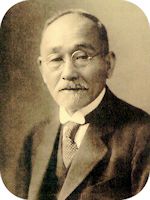 From Meiji era to Showa period, Chuta Itoh was involved in the design and
construction of many famous shrines and temples. From Meiji era to Showa period, Chuta Itoh was involved in the design and
construction of many famous shrines and temples.
Heian Shrine, Meiji Shrine, Hokoku Shrine, Kasuisai Gokoku Pagoda, Yahiko
Shrine, Uesugi Shrine, Gion Kaku, Earthquake Memorial Hall, Nakayama-hokkeji
Holy Cathedral, Tsukiji Honganji Temple, Yushima Cathedral, Meizenji Temple、......
Yahiko Shrine was built in 1916 by the design of Chuta Itoh for the reconstruction
due to fire.
Later, as his only Western-style architecture, he designed and built Kanematsu
Auditorium of Tokyo Commercial College (now Hitotsubashi University) in
the old-fashioned Romanesque style, when "Gothic architecture in university
auditoriums" was firmly established. Moreover, the interior of the
auditorium was mostly filled with ghosts and monsters handmade by Dr. Itoh
himself.
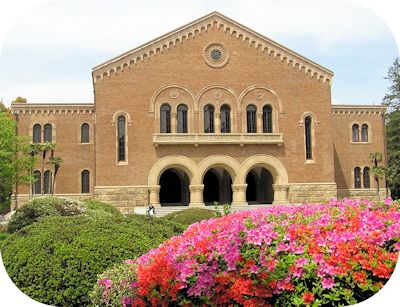
The starting point of Tokyo Commercial College was the private school "Commercial
Law School" of Arinori Mori, in which Eiichi Shibusawa, Yukichi Fukuzawa
and others were deeply involved.
After difficult twists and turns from a private cram school to a public
school, a few years after being promoted to a university through Tokyo
Kosho (high commercial school), the Great Kanto Earthquake struck Tokyo
and its Kanda school building was almost destroyed (1927). The relocation
from the center of Tokyo to the wilderness of Musashino (now Kunitachi
City) was decided.
The auditorium, the center of the campus, was blessed with the benefit
of Kanematsu Company's donation offer, as well as a rich budget, and as
a result, the construction plan went up to Dr. Chuta Itoh, professor of
Tokyo Imperial University, an architectural giant at the time. Despite
being super busy, Dr. Itoh took on all the design and construction, leading
his influential force.
For more than half a year on his own, Dr. Itoh went out from Hongo of his
university to Tokyo Station, and was rocked by a two-hour train one way
far until the Musashino wilderness all the way. Why?
And the extraordinary history of this college that leads to this case,
and also the involvement of historical figures starting with Katsu Kaishu.
For several years in my (Shigeru Koshiba's) 60s, I accompanied Mr. Tatsuo
Nakamura, nearly twice my senior, and did my best to complete a certain
research. The memory of finishing the long novel "The Story of the
Auditorium Where Monsters Live" at the strong request of the senior
is one of my precious experiences now.
............
The Yahiko Shrine, contrary to my expectation, left nothing to remind me of Dr. Chuta Itoh. No one at the shrine seemed to know Chuta. I was greatly puzzled when asked, "Is it ITOCHU Corporation?"
|
|
| (3) Hotel Minoya, the Four Season Inn
This hotel is a famous inn around the neighborhood, needless to say, in
Yahiko Village. Its appearance, the interior decoration, and the staffs'
thoughtful hospitality. I surely had no complaint.
I ate meals twice, both morning and evening, and I was satisfied with everything,
...... menu, taste, and atmosphere of the dining room.
Unfortunately, the photos of this hotel itself are few with the cedar ball
at the entrance and at mealtime. I'll leave some here.
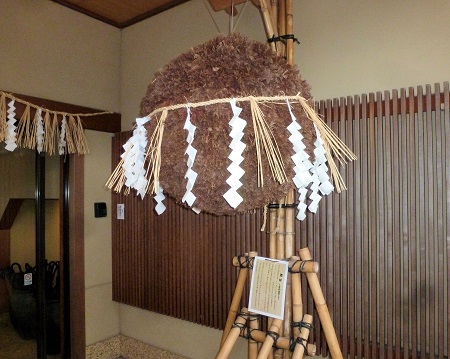
|
|
| Dinner, the 1st day |
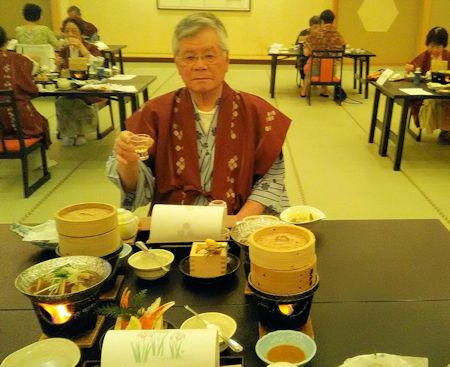 |
|
|
| Breakfast, the 2nd day |
 |
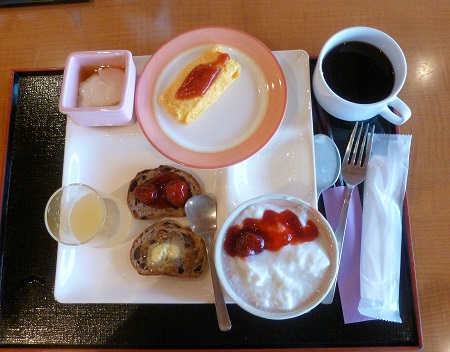 |
|
| Dinner, the 2nd day |
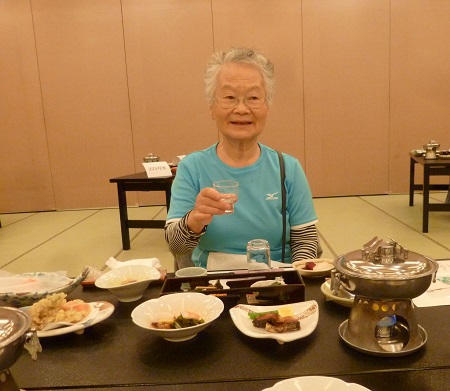 |
 |
|
| Breakfast, the last day |
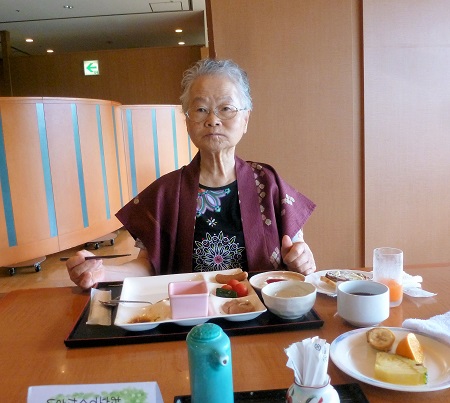 |
 |
|
|
| (4) Return trip |
|
May 18, the third day
We left the hotel at 11:00 by shuttle bus.
At Tsubame-Sanjo Station, took "Max Toki No. 320" at 12:31 p.m. |
|
|
|
|
Ar: Tokyo Station at 14:28.
Shopping for dinner (sake snacks) at Atre in Shin-Urayasu Station.
Bathing at Dunlop Sport Plaza. Without sporting.
After all, it's home. While relaxing and soaking in the pleasant afterglow of the trip, we had dinner with local sake from Yahiko Village. |
|
| Part 4 Reading: 10' 42" |
| Total Reading: 18' 13" |
|
|
|
|
|
|
|
|
|
|
|

